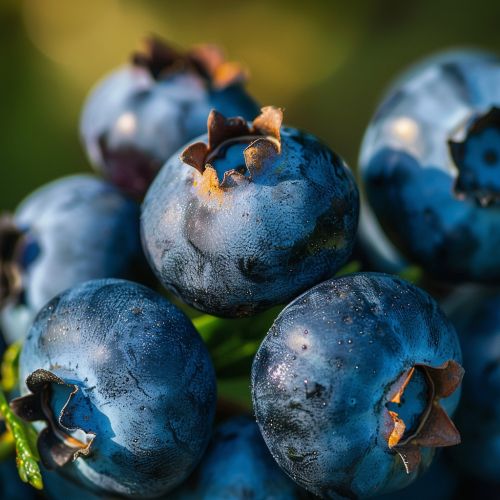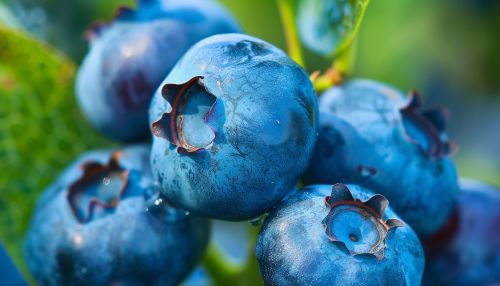Blueberry
Introduction
Blueberries are perennial flowering plants from the genus Vaccinium. This genus also includes cranberries, bilberries, huckleberries, and Madeira blueberries. Commercially sold blueberries are typically from species that are native to North America, particularly the northern and eastern parts of the continent.


Botanical Description
Blueberry bushes can vary in size from 10 centimeters to 4 meters in height. In the commercial production of blueberries, the species Vaccinium corymbosum, the highbush blueberry, is most commonly used.
The leaves can be either deciduous or evergreen, ovate to lanceolate, and 1–8 cm long and 0.5–3.5 cm broad. The flowers are bell-shaped, white, pale pink or red, sometimes tinged greenish.
The fruit is a berry 5–16 millimeters in diameter with a flared crown at the end; they are pale greenish at first, then reddish-purple, and finally dark purple when ripe. They are covered in a protective coating of powdery epicuticular wax, colloquially known as the "bloom". They have a sweet taste when mature, with variable acidity.
Cultivation and Harvesting
Blueberry cultivation has been centered in North America due to the high demand for the fruit. The United States produces the majority of all blueberries worldwide, followed by Canada. The Vaccinium corymbosum, or highbush blueberry, is most commonly cultivated due to its high yield and large fruit size.
Blueberries are usually harvested from mid-June to mid-August in North America. Harvesting is done by hand or by mechanical harvesters; the latter can quickly harvest up to 200 bushels a day.
Nutritional Content and Health Benefits
Blueberries are rich in various vitamins, minerals, and beneficial plant compounds. They are exceptionally high in Vitamin C and Vitamin K. They also contain significant amounts of fiber and manganese.
Blueberries are among the highest antioxidant value fruits. The antioxidant value of blueberries is almost 4 times higher than other fruits like apples. Antioxidants are believed to help protect the body against damage by free radicals and the chronic diseases often associated with aging.
Culinary Uses
Blueberries are versatile in the culinary world. They can be eaten fresh or used in a variety of dishes. They are commonly used in baked goods, jams, jellies, and beverages. They are also popular in breakfast dishes like pancakes, muffins, and cereals.
